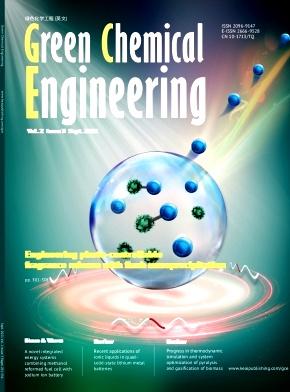微量H2S、CO和CH4对Ti0.8Zr0.2Cr0.75Mn1.25Ce0.01储氢合金中毒机理的影响
IF 7.6
Q1 ENGINEERING, CHEMICAL
引用次数: 0
摘要
timn2基合金由于其适度的储氢操作条件和卓越的体积储氢密度而具有重要的应用潜力。工业副产氢广泛存在且价格相对低廉,通常含有H2S、CO、CH4等成分,其在吸氢和解吸氢过程中对timn2基合金的中毒机理尚不清楚。采用等温吸附曲线、x射线光电子能谱(XPS)、扫描电镜-能谱(SEM-EDS)研究了H2S、CO和CH4对Ti0.8Zr0.2Cr0.75Mn1.25Ce0.01储氢合金的中毒机理。结果表明:杂质气体对合金的毒性为CO >; H2S > CH4,再生难度为H2S >; CO > CH4;经过5组H2S毒再生循环后,Ti0.8Zr0.2Cr0.75Mn1.25Ce0.01合金的吸氢率恢复到58.59%。5组CO中毒后,储氢容量保留率降至4.03%,但经纯氢再生后,合金的吸氢容量恢复到96.62%。CH4中毒100次后,合金的保留率为100%。XPS分析结果表明,Ti0.8Zr0.2Cr0.75Mn1.25Ce0.01合金受H2S毒害后,形成了两种金属硫化物(TiS和ZrS2)和一种金属硫化物Zr(SO4)2。因此,H2S中毒属于不可逆吸附,CO中毒属于可逆吸附。中毒机理可以指导工业副产氢吸附/解吸合金的设计。本文章由计算机程序翻译,如有差异,请以英文原文为准。

Poisoning mechanism of Ti0.8Zr0.2Cr0.75Mn1.25Ce0.01 hydrogen storage alloy by trace H2S, CO, and CH4
TiMn2-based alloys hold significant application potential due to their moderate hydrogen storage operating conditions and exceptional volumetric hydrogen storage density. Industrial by-product hydrogen, which is widely available and relatively cheap, often contains components such as H2S, CO, and CH4, whose poisoning mechanism on TiMn2-based alloys in the process of hydrogen absorption and desorption remains to be elucidated. In this work, the poisoning mechanisms of H2S, CO, and CH4 on Ti0.8Zr0.2Cr0.75Mn1.25Ce0.01 hydrogen storage alloy were investigated by isothermal adsorption curve, X-ray photoelectron spectroscopy (XPS), and scanning electron microscope-energy dispersive spectroscopy (SEM-EDS). The results showed that the toxicity of impurity gases on the alloy is CO > H2S > CH4, and the regeneration difficulty was H2S > CO > CH4. The hydrogen absorption of the Ti0.8Zr0.2Cr0.75Mn1.25Ce0.01 alloy was restored to 58.59% after five groups of H2S poisoning-regeneration cycles. The hydrogen storage capacity retention rate decreased to 4.03% after five groups of CO poisoning, but the alloy recovered to 96.62% of the hydrogen absorption capacity after regeneration with pure hydrogen. The retention rate of the alloy was 100% after 100 cycles of CH4 poisoning. According to the results of XPS analysis, two metal sulfides (TiS and ZrS2) and one metal sulfate Zr(SO4)2 were formed after the Ti0.8Zr0.2Cr0.75Mn1.25Ce0.01 alloy was poisoned by H2S. Therefore, H2S poisoning belongs to irreversible adsorption and CO belongs to reversible adsorption. The poisoning mechanism may guide the design of alloys for the absorption/desorption of industrial by-product hydrogen.
求助全文
通过发布文献求助,成功后即可免费获取论文全文。
去求助
来源期刊

Green Chemical Engineering
Process Chemistry and Technology, Catalysis, Filtration and Separation
CiteScore
11.60
自引率
0.00%
发文量
58
审稿时长
51 days
 求助内容:
求助内容: 应助结果提醒方式:
应助结果提醒方式:


